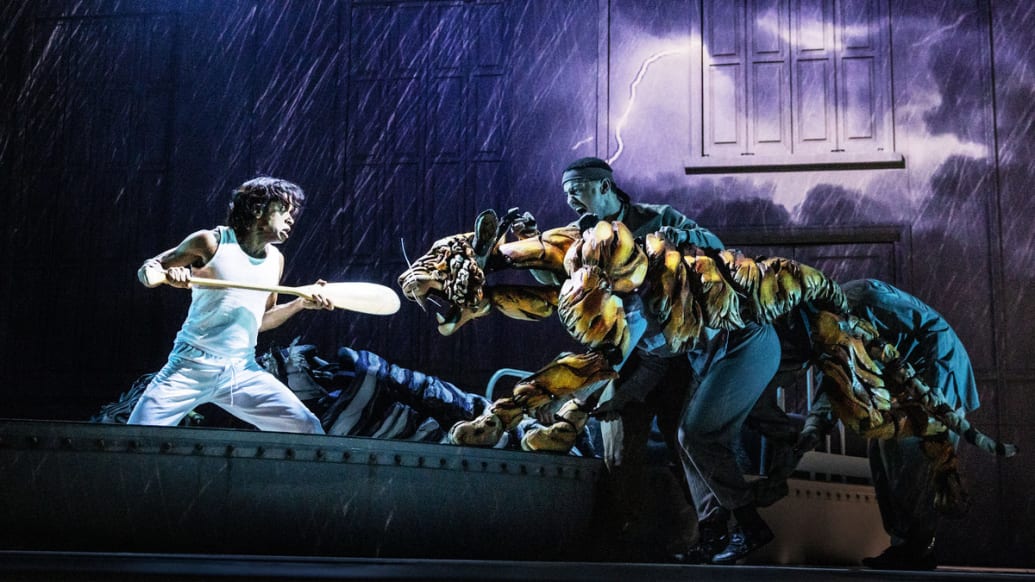
Life of Pi tells the story of one boy trapped on a lifeboat with a Bengal tiger in the middle of the Pacific Ocean for 227 days. It’s hard to imagine, particularly after seeing the film, how they could create this on the stage, but what they delivered is inspiring. Following the 2001 novel and the 2012 Academy Award-winning film adaptation, Life of Pi is on stage and provides the best version of this tale.
The puppetry of Life of Pi is nothing short of miraculous. The Bengal tiger (named Richard Parker) is controlled by three puppeteers, but you quickly stop seeing the humans and only see the ferocious animal they command. The movement of Richard Parker, from when he’s trying to stay afloat in the ocean to when he’s fighting and eating another animal, completely transfixes you. They’ve even focused on the realism of small features such as the tiger’s breathing and ear movement. Simply seeing the puppetry that brings Richard Parker to life is worth the price of admission. On top of the masterful puppeteering of the tiger, they’ve also created a hyena, a zebra, an ape, and more. Every animal feels completely real and you’re able to develop empathy with the creatures. Finn Caldwell, the Puppetry & Movement Director, did a remarkable job bringing these animals to the stage.
In addition to the mystical puppetry, the staging of Life of Pi is incredible. The lifeboat, that so much of the show takes place on, emerges from the floorboards to instantly transport you to the ocean. The rescue tube Pi must survive on for a time, is controlled by ropes that keep the illusion it’s floating in the water. It also can come off the floor when needed, as used with dramatic effect. The lighting, designed by Tim Lutkin, realistically portrays the storm that causes the shipwreck and the endless expanses of the ocean in which Pi is trapped. When fight scenes take place with Richard Parker, the lighting reflects the genuine danger of the scenario. The music, composed by Andrew T. Mackay, demonstrates the beauty of wonder and the triumph of Pi conquering Richard Parker, in a climactic moment. All of the technical categories involved in bringing Life of Pi to the stage deserve adoration for their achievement in staging.
While the puppetry and stagecraft of Life of Pi shines, there is a star emerged on stage in Hiran Abeysekera, who portrays Pi. A native of Sri Lanka, Abeysekera won the Laurence Olivier Award for Best Actor in the West End run of this production. He delivers a sensational performance, while not leaving the stage for virtually the entirety of the show. He brings the youthful charm of the 16-year-old character while also earning the character’s profound growth over the course of his journey. Abeysekera completes the theatrical equivalent of a marathon while providing brilliant acting.
Life of Pi is one of the most creative deliveries of stagecraft I’ve seen. The fact that this production was able to bring to life an entire zoo of animals, a shipwreck, and a lifeboat in the middle of the ocean is awe-inspiring. Life of Pi on stage is simply ingenious.